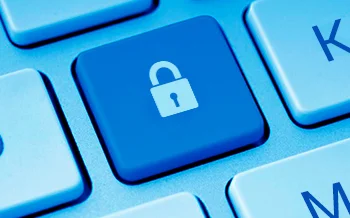Ransomware Part I
The daily reports of cybercrime are important reminders about the need to protect your business from malicious behavior that could threaten the success of your business. There are so many different things that can attack your computer, steal your data, and wreck your day. One of the most troublesome has been the development of ransomware. (FYI. Ransomware isn’t actually all that new– some version has been around for decades) Ransomware is a type of computer virus that takes your data hostage and like any kidnapping scheme, demands money for the release of your data.
Why is ransomware so nasty? Because it steals the most important thing your business possesses. Data. Worse, once infected there isn’t generally a way out. No one can “disinfect” your machine. You aren’t going to be able to call in IT support to solve the problem. Basically, you have three options.
Pay the ransom. This payment is usually via credit card or bitcoin (a digital currency). Some ransomware viruses even provide help lines if you’re having trouble. Of course there are no guarantees your will get access to your data–these are thieves you’re dealing with.
Don’t pay and lose your data – This has its obvious downsides, unless…
You have a safe, clean backup. In that case, you are stuck with the nuisance of restoring your data with the backup, but you aren’t out any money. However, this comes with a caveat: your backups have to be clean. The problem with ransomware viruses is that just making backups may not be sufficient to protect your data, as the backups can be infected also. In the next blog, we will address your need to add an additional layer of protection to handle ransomware attacks.
Cybercrime: In-house protection that only YOU can provide!
From the political world to the corporate, all we hear about is hacking, hacking, hacking. Everyone gets hacked, data is stolen, etc. So, the cry goes up for better security protections for everyone’s data. Firewalls, virus software, etc., etc., etc.
Want to know one of the best ways to protect your data? Train your employees to stop opening any emails or links unless they absolutely know they are safe. Scam emails that try to trick you into opening a link to a bogus site, or worse, trick you into providing your password or ID for a known site are exceptionally effective ways for hackers to get into your internal system and compromise data. Yes, ransomware is a serious issue, and malware is out there, but employees naively opening phishing emails remain one of the biggest risks to data security. Talk to your employees on an on-going basis and provide training and tips on how to ID phishing scams
With Ransomware, The ONLY Cure Is Prevention!
It just keeps showing up in the news. Ransomware seems to just not come to an end. If you haven’t heard, ransomware is a particularly nasty virus that freezes access to your data and then demands a ransom, usually in bitcoin. The worst thing about it is that once you are hit, there is almost nothing you can do. There are only 2 options: don’t pay the ransom and lose your data, or pay it. There is no “downloadable” fix. You are stuck. With ransomware, the ONLY cure is prevention.
In the case of ransomware you need to be constantly updating your data and securing it in isolation from your network. Even then, if your backup system overrides your older data each time it backs up, you can actually save the virus if it has infected your system at the time of the backup. To make sure you are as protected as you can be, we strongly recommend you contact a technical security expert to consult on the best way to protect against ransomware and other security hacks.
SMB- Security and Your Sub-Contractors
So you feel relatively comfortable that you have created cyber security around your data and your employees are trained to avoid security errors in their day-to-day business ( a MAJOR source of security breaches, by the way.) However, you may be overlooking one area where you are exceptionally vulnerable. What protection do you have from those you do business with? If you are a manufacturer, for example, you may have several vendors who provide components and raw materials. How careful are they about data security? Smaller producers and service providers may perceive themselves as not being a likely hacker target, which is incorrect. Small firms are significant targets for data hacking because they have access to larger firms. They can provide a “digital backdoor” to the firms they sell to.
You need to work closely with all of your vendors to ensure that they are as serious about protecting their systems as you are. If you share digital information with your subcontractors, you open a very wide door for any of their vulnerabilities.
And this doesn’t just apply to the manufacturing sector. Medical offices share data, for instance. Consider talking to a security expert to address your vulnerability to a security breach via the very vendors you rely upon. You need to expect as much focus on security from them as you do from yourself.




